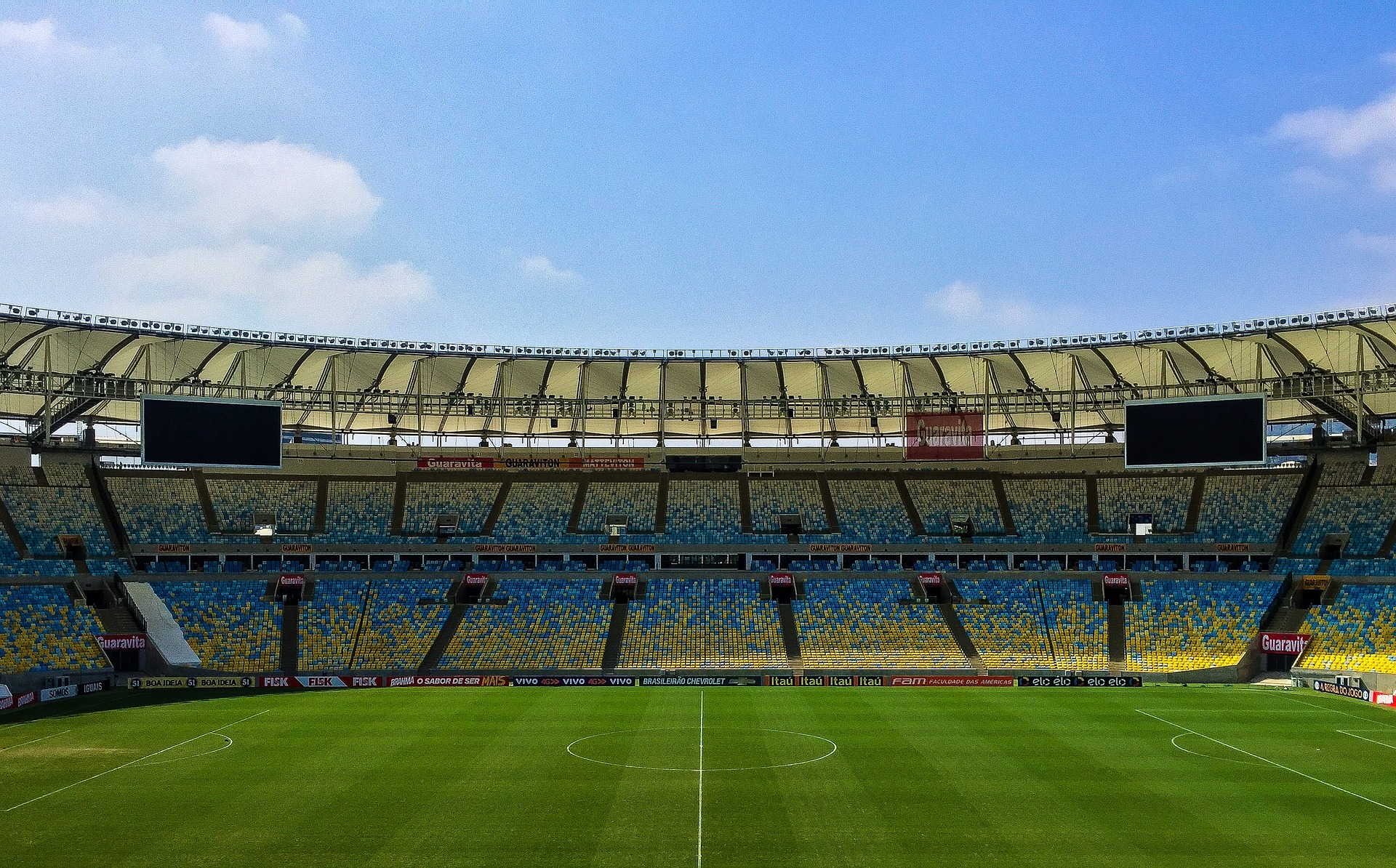Today, we’re going to start with the most basic part of the game of soccer – the playing field. We’re going to discuss what all those white lines represent, as well how the size of the pitch is determined.
The football pitch, also known as the soccer field, is the rectangular playing surface for the game of football. The pitch is rectangular in shape, with the longest sides called the touchlines. The entirety of the shorter ends are known as the goal-lines (sometimes also endlines), but the area of the line from the corner where they meet the touchline to the edge of the goal is also referred to as the bylines. According to the International Association Football Board (IFAB), a full sized pitch may be anywhere between 50-100 yards in width and 100-130 yards in length. FIFA (Federation Internationale de Football Association), popularly known as the organizing body of the World Cup, is more specific, requiring the width be 70-80 yards and a length of 110-120 yards for international play and an extended 100-130 yard length for club soccer.
Footy Trivia: A soccer field is known as a “pitch” because when the game first became popular in the 1800s, the games were played on cricket fields, which are known as pitches. Field is more commonly used in North America, while pitch is more popular in England.
You may be asking yourself at this point, why is so much variety allowed for? Why doesn’t everyone just play on the same sized pitch? One reason is down to the large variety of playing styles that can be characteristic to a football club. Short pitches may lend themselves better to teams that play long-ball, whereas possession based teams require lots of space to spread the ball across the pitch.
The goals, which are two upright posts connected by a horizontal crossbar, are positioned in the center of each goal-line. The standard goal is 24 feet across and 8 feet high.
Field Markings
Halfway Line and Center Circle
Probably the most plainly named of all the field markings, this line runs from touchline to touchline, halfway through the pitch from each endline. On kickoff, each team must be on their starting half of the field. The center circle, an even circle around the centermost point of the halfway line, ensures opposing players must start at least 10 yards away from the player kicking off. Finally, the halfway line plays an important role in the offsides rule, but we’ll get to that later.
The Penalty Box, Penalty Spot and Six Yard Box
The penalty box is a rectangular box extending 18 yards from the goal-line and 18 yards on either side of each goal post. This is why it is also commonly called the 18 yard box. As you may already know, the goalkeeper is the only player on the field that can use his hands in the regular course of play. The privilege is only available to him, however, within the penalty box.
The penalty box also houses what is known as the “penalty spot”. Penalties will be discussed later in the laws of the game discussion, so all you need to know now is that the penalty spot is in the center of the goal, 12 yard out from the goal line. The penalty spot also explains the need for the arc (also known as the “D”) at the top of the penalty box. Opposing players (minus the goalkeeper) must be outside of the penalty box and at least 10 yards from the penalty spot when an attacking player is taking a penalty. Since the penalty spot is 12 yards from the goal-line, that means it is only 6 yards from the outside of the penalty box to the penalty spot in certain areas. The arc was included to help the referee ensure the 10 yard distance is maintained at all places.
The final marker found within the penalty box is the six yard box. The box serves as the marker on which a goal kick must be taken from. But more importantly, the six yard box serves as an important landmark for the goalkeeper, as well as defenders and attackers. The box extends 6 yards from the endline and 6 yards to either side of the goal, assisting players in establishing their positioning around the goal, even when they aren’t necessarily facing the goal itself.
Corner Circles
The last field marking we will mention here is the corner circles. The circles serve one purpose, which is to give the player taking a corner kick a defined area in which he must place the ball. There are two small marks 10 yards from each corner circle, one on the touchline and one on the goal-line, forming an imaginary line 10 yards away from the corner flags. This is to prevent opposing players from getting too close prior to a corner kick.
Like many professional sports, football clubs across the world play in stadiums built to hold thousands of fans. The Camp Nou, home to FC Barcelona in Spain, holds over 99,000 fans. In the United States, GEODIS Park, home to Major League Soccer’s Nashville FC, is the largest stadium built specifically as the home of a professional soccer club. It holds 30,000 fans and is seen as a huge step forward for soccer in the United States.
If you still have questions, feel free to send them in and I’ll do my best to get you an answer!

